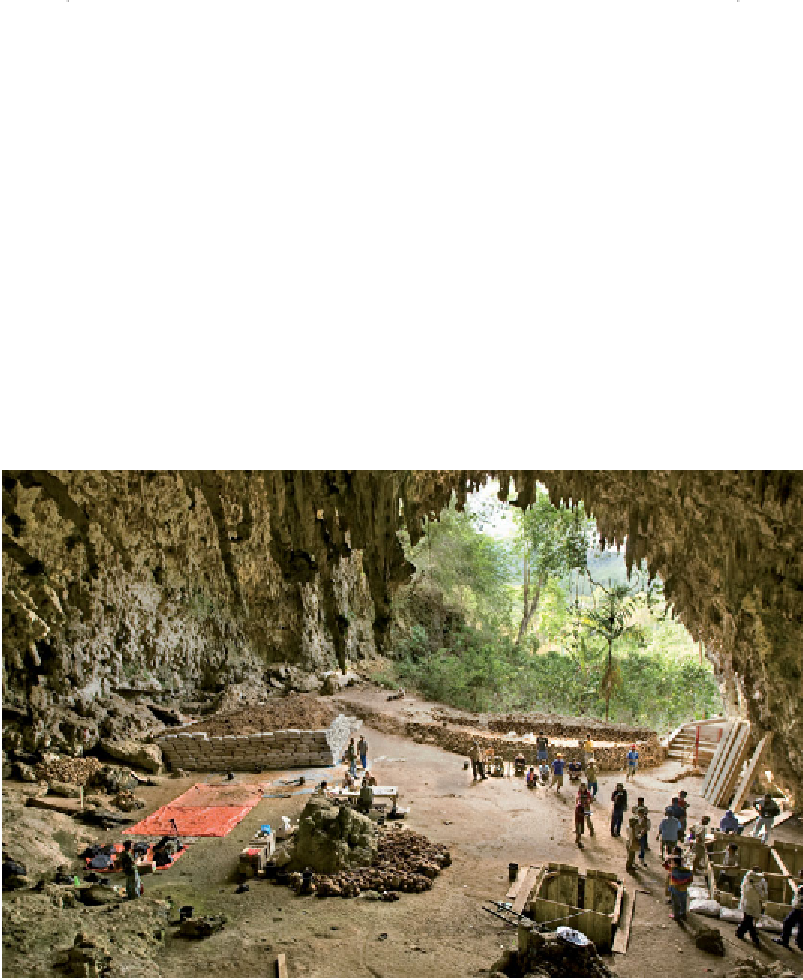Travel Reference
In-Depth Information
excavation. Then, just weeks after the Australians had left, the Indonesians
discovered the remains of an almost complete hominan skeleton.
11
The team excavated the bones with exquisite care, fi rst digging out the
entire mass of deposits that contained it and transporting it to a nearby hotel.
Prolonged soaking in Liang Bua's wet environment had turned the bones,
in the memorable phrase of one of the expedition's members, to a kind of
“mashed potatoes with the consistency of wet blotting paper.” In order to
harden these exquisitely valuable bits of mush, each of them had to be coated
with glue diluted with acetone.
The little female skeleton was fairly complete, some of its bones still
joined together by bits of cartilage. Apparently she had fallen into one of the
deep pools in the cave and been preserved from decay in the oxygen-free
Figure 137
This is how the Liang Bua excavation appeared in early September 2009, look-
ing out through the cave's opening to the river valley beyond. The shaft where the complete
Hobbit skeleton was recovered is on the far right. Earth from the excavations, carefully sieved
to recover thousands of tiny animal bones, is piled up to the left, awaiting the time when it can
be used to fi ll up the excavations again.


